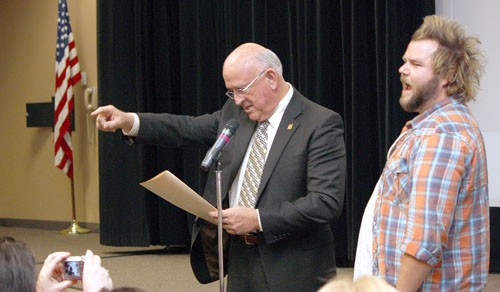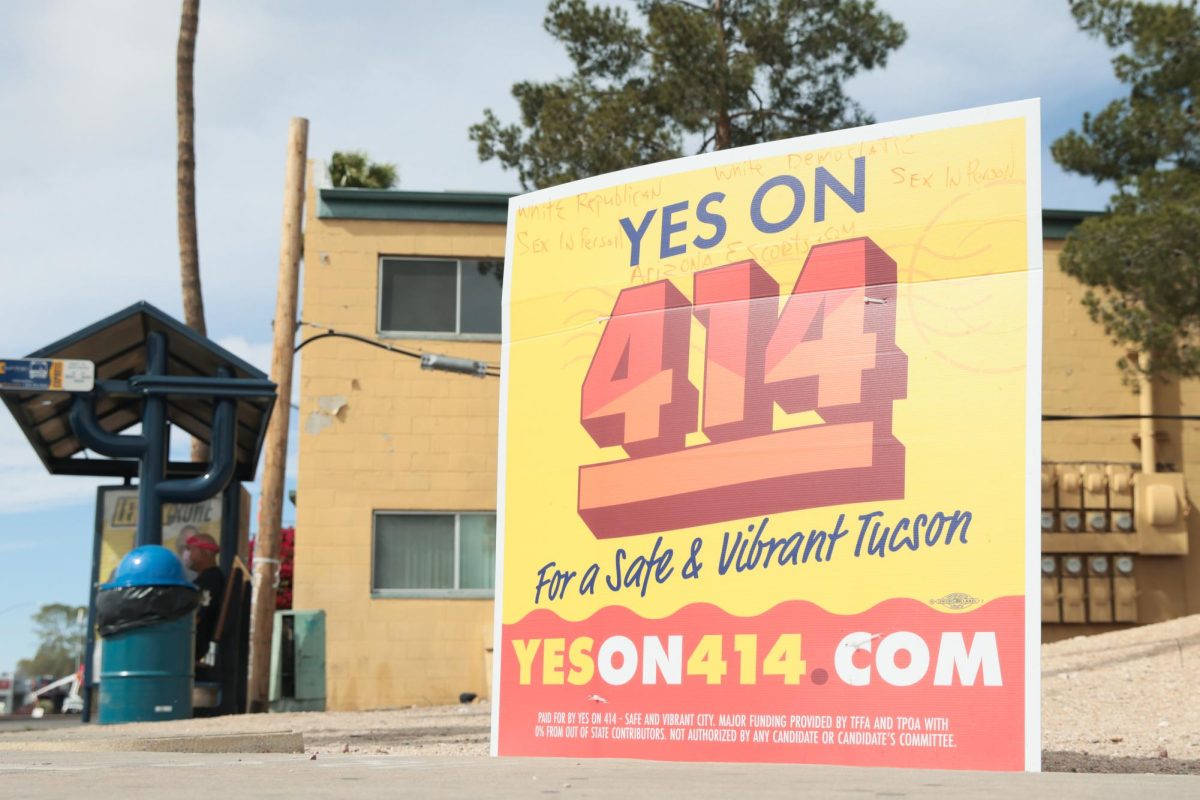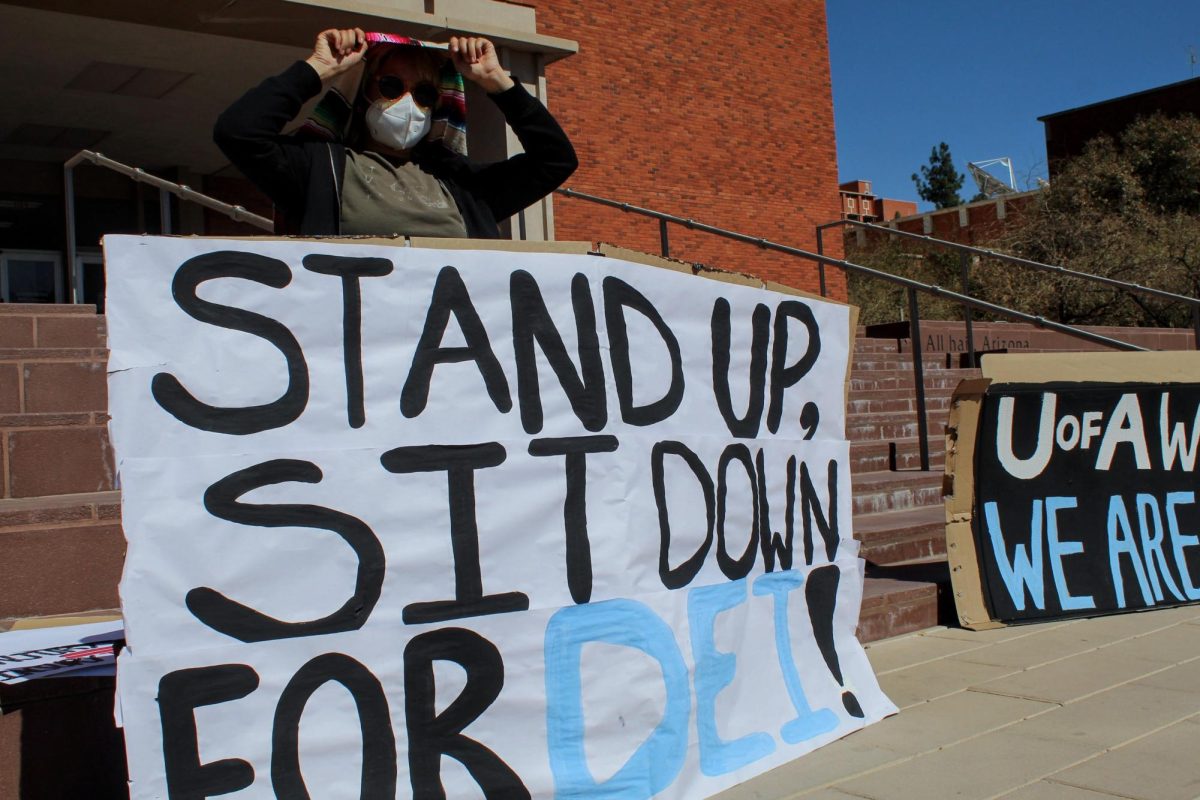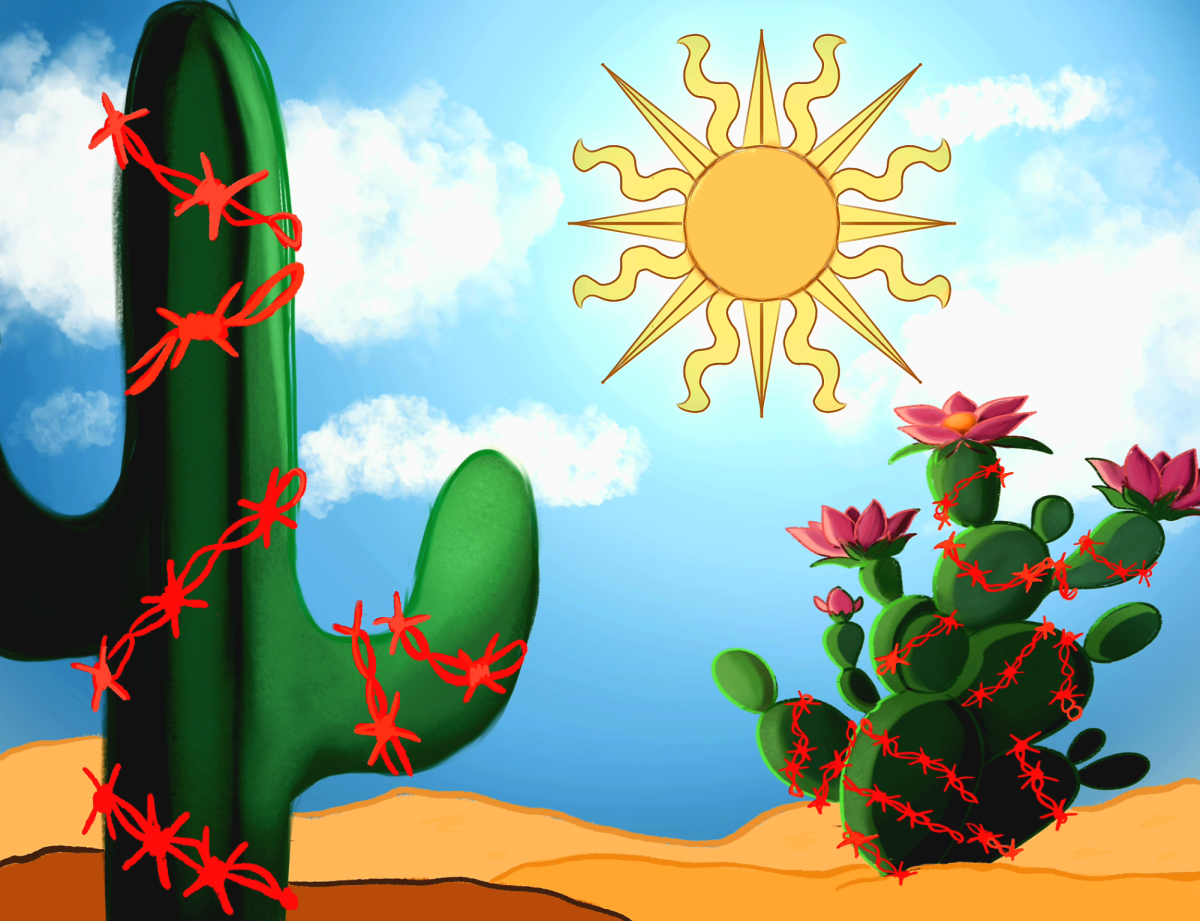The following are some of the biggest headliners of the 2009-10 academic year featured in the Arizona Daily Wildcat. They are presented in no particular order.
Swine flu hits UA
The H1N1 influenza virus, commonly known as swine flu, broke out on campus in late August 2009. The school had 25 reported cases of the flu and one confirmed case of an unidentified female with swine flu.
In early September 2009 Campus Health Services stopped testing for swine flu after the first case was confirmed. They only tested to see when it would hit campus and once it did, they treated everyone for their flu symptoms.
They suggested that students with flu-like symptoms stay home. In the second week of September Campus Health Services implemented a “”flu nurse”” phone service for students to call and get diagnosed.
In early November Campus Health Services offered swine flu vaccines in Arizona-Sonora Residence Hall for those people most at risk. Anyone living in a residence hall could be vaccinated but they gave priority to those 18 and younger.
— Michelle A. Monroe
Faculty has ‘no confidence’ in Shelton, Hay
In September the Wildcat reported a blog had been started by members of the UA faculty and staff to anonymously speak out against UA President Robert Shelton and UA Provost Meredith Hay. The Blogspot.com site, “”UA Defender,”” had posts alleging at “”four month’s (sic) into her tenure as provost, the deans were ready to oust Meredith Hay over her budget over-reaching,”” that a vote of no confidence was necessary and that the university-wide General Education Committee, which oversaw the UA’s General Education Program, has seen its abilities and responsibilities shrink as the provost’s office exerts more control. In response, the university released a poll asking for feedback from faculty. The poll asked voters to gauge their confidence in Shelton and Hay. More than 300 voters replied that they had no confidence, while 98 said they had full confidence.
— Michelle A. Monroe
Campus construction
The UA saw a lot of construction this year from the expansion of the Student Recreation Center to new residence halls on Sixth Street.
Noise from construction on the new Sixth Street Residence Halls at the corner of Euclid Avenue and Sixth Street bothered some Coronado residents. The residence halls are scheduled to be ready for students for fall 2011 and will house 1,088 students.
The Student Recreation Center hosted its grand opening on Feb. 22 in the form of a two-day celebration. The opening was called the “”Big Green Event”” because the new center was built with sustainability in mind.
The $28.5 million facility features two stories of workout machines, an outdoor bouldering wall, two outdoor volleyball sand courts and a multi-activity court.
The upgrades to the Rec Center made it the first university recreation center to earn a platinum Leaders in Energy Efficiency and Design designation.
The Student Recreation Center was closed from 6 a.m. to noon on Feb. 10 due to a problem with water pipes.
It also flooded on Feb. 28 from a trench in the construction area of the Sixth Street dorms.
— Bethany Barnes
Important legislation
According to the U.S. Census Bureau, less than half (49 percent) of Americans aged 18-24 voted in the 2008 elections, the lowest of any age range. But just because some college-aged individuals choose not to take part in the legislative process does not mean they are not affected by the outcome.
In the past year the UA saw tempers flare and debates rage on a variety of political issues, from the concealed weapons for professors law, to the ongoing debates over Senate Bill 1070, to the sales tax increase of Proposition 100.
The Associated Students of the University of Arizona held several forums throughout the year to give students the opportunity to voice their opinions. They passed a resolution opposing concealed weapons for professors.
Presently the biggest debate is over SB1070, a bill designed to curb illegal immigration, which is being criticized for allowing what opponents believe to be racial profiling. On May 5 students protested on campus against the new immigration law and got more than 1,400 signatures on a petition to get UA President Robert Shelton to formally denounce the bill.
The following day Shelton released a statement calling the bill “”flawed.””
— Luke Money
UAccess wrap-up
Student Link went through a major transformation for both students and employees with the new
UAccess system.
All employee systems such as payroll and timekeeping were moved to the new UAccess Employee system earlier this year.
UAccess allows for all parts of campus to run on a single type of software allowing for 24-hour updates and faster processing.
Starting in fall 2009, the Mosaic Project, headed by University Information Technology Services, moved to link much of the important student information into one
place, UAccess.
Delineated $50 million at the end of the 2008-09 school year, the Mosaic Project worked to bring online a complete revamp of access to student financial aid, biographic and class information as well as a new class registration system with the Cat Cart, allowing students to browse classes and queue them before registration time.
UAccess had some initial faltering. Some online class lists were inaccurate or incomplete and some information was hard to find for students. Many felt that without training on how to use the new system, UAccess Student would be more a hindrance than
a help.
Transfer students and incoming freshmen had different worries about the system and with initial slowness persisting through early March, some departments went as far as to place all their registration outside the system.
However, by the height of class registration in mid-April, more than 30,000 students had been provisioned in the system and more than 63,000 classes were registered for students for the upcoming summer and fall semesters.
— Jazmine Woodberry
Think Tank on campus
In August 2009 a new tutoring location on campus opened its doors and has since served thousands of students. Prior to the Think Tank, there were many separate tutoring programs all over campus, for specific needs, which was not efficient or economical. Officials wanted to centralize the service to save costs during budget cuts. The center consists of the writing center, math and science tutoring and peer mentoring, as well as drop-in tutoring and various workshops. All of its programs are free, except one-on-one tutoring appointments. According to program estimates, its various services saw approximately 3,000 students make more than 12,000 visits in fall 2009. In February 2010 the Think Tank held workshops for freshmen on academic probation as a way of increasing retention and graduation rates. Its numbers are expected to rise in the coming semesters.
— Michelle A. Monroe
Daily Wildcats stolen
On Oct. 8, 2009, approximately 10,000 copies of the Arizona Daily Wildcat were stolen from newsstands across campus, an action that cost Arizona Student Media an estimated loss of $8,500.
The Wildcat staff was made aware of the situation at about 8 a.m. when Advertising Manager Mike Spohn saw three men take all copies of the newspaper from a stand near the Park Student Union. Students and staff reported seeing similar incidents across campus that morning.
President Robert Shelton and journalism assistant Professor Kevin Kemper said the theft interfered with the flow of information and free speech on the UA campus.
Wildcat reporters approached Phi Kappa Psi fraternity leadership several times and asked whether the fraternity had any involvement with the theft, as was suspected, but the president and vice president of the fraternity would neither confirm nor deny involvement. “”I’m not going to talk about this at all,”” said Keith Peters, president of Phi Kappa Psi. “”We’re not supposed to talk to the media.””
Some of the thousands of Arizona Daily Wildcat issues stolen were recovered at two sites near West Anklam Road on Oct. 9. Among the abandoned newspapers was the homework with the names of UA students Nick Kovaleski and Alex Cornell, both undeclared freshmen and members of the Phi Kappa Psi fraternity. On Nov. 6, the UA Greek Standards Board sent out an official report and found Phi Kappa Psi not responsible in the stolen newspapers case.
— Laura E. Donovan
Haiti hits UA
In January 2010 Haiti was hit by a 7.0-magnitude earthquake, and the UA began gathering help in different ways for the devastated country. A group of graduate students put on a fundraiser, and one of the group’s members had family in Haiti who were affected by the earthquake. The UA Office of International Student Programs and Services collected donations of items requested by the nonprofit organization World Care in the days following the quake. A group of medical students hosted an event at local bar and restaurant Gentle Ben’s called “”Help Haiti Shake the Quake.”” The Beta Theta Pi fraternity sold T-shirts to members of the UA and Greek Life communities to raise money and awareness. The UA held a luncheon and a raffle raising $3,154 for Haiti. UA medical students, teachers and doctors have spent time in Haiti helping treat wounded and rebuild the city.
— Michelle A. Monroe
Budget crisis
The UA struggled to balance its budget in August 2009. UA President Robert Shelton told the Arizona Board of Regents his plan to increase enrollment by 10,000 students by the year 2020. To save money in the current year, the Colleges of Science, Social and Behavioral Sciences, Humanities and Fine Arts were consolidated into the Colleges of Letters, Arts and Science. At the November meeting of the UA Faculty Senate, Provost Meredith Hay introduced a large-scale reformation of the UA’s budget management process known as the “”Budget Redesign,”” which Hay called “”probably the most complicated, in-depth redesign of the university’s budget ever.”” The plan, which Hay said will take many months to put in place, would involve funneling available dollars more directly to the colleges, especially the tuition money those colleges are responsible for bringing in.
— Michelle A. Monroe
Tuition on the rise
In February 2010 UA President Robert Shelton submitted a tuition proposal to the Arizona Board of Regents. In-state undergraduate and graduate tuition would increase by $1,450, to $7,224 and $8,014, respectively. Non-resident tuition would raise by $2,000, to $22,983 for undergraduates and $23,276 for graduate students. Students protested the proposal. In early March 2010 ABOR held a video-streamed tuition hearing with all three Arizona universities. Shelton proposed a less dramatic increase to tuition, and on March 11 ABOR approved it. Resident undergraduate tuition for the
2010-11 academic year will be $8,237, a 20-percent increase. UA non-resident undergraduate tuition will be $24,596, a 10-percent increase. UA resident graduate tuition will be $9,027, an 18-percent increase. For non-resident graduate students, tuition will be $24,889, a
10-percent increase.
— Michelle A. Monroe









